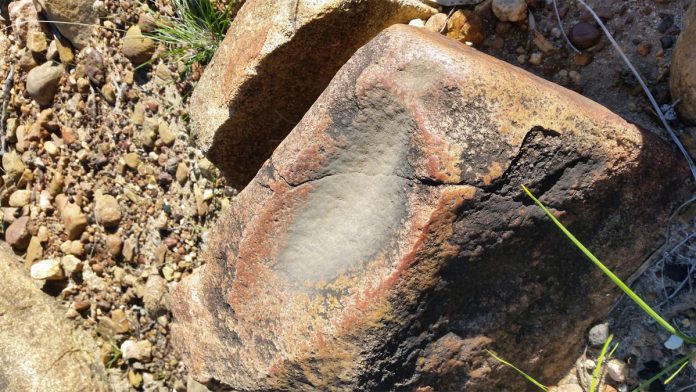The first rule of Aboriginal Artefacts is to leave it where you find it. Don’t move it and absolutely don’t take it. Besides being illegal (with fines in the hundreds of thousands of dollars), you may be destroying a vital clue to the family history of the local clan. What may look like a “cool rock or stick” to you could be a glimpse into 80,000 years of history to indigenous people. Leave it in place. It’s literally the least you can do.
Where can I learn which Indigenous Nation I am exploring?
It’s always good to know who was the traditional owner of the land you’re visiting. You can find a detailed map of the approximate boundaries of the First Nations at the AIATSIS website.
What can you do if you find an Aboriginal Artefact?
If you find an Aboriginal Artefact, alert the Traditional Owners of your find so that they can decide the future of their past.
- Leave it in place. Do not remove the artefact
- Take a photo of the artefact and note the precise location. Do not share this location with anyone besides the Traditional Owners.
- Search up the Traditional Owners of the land. If they have a website or contact information, simply submit your photo and the location. Easy.
- If not, head to the nearest town. Ask any First Nations person where you can find a Traditional Owner, (or elder) of the local clan. Introduce yourself and give them the information.
Why is it so important?
With over 250 nations, each with complex society structures, languages and cultures you don’t know what you’ve found. First Nations people used complex symbolism to document maps, histories, and stories. What looks like a few cool scratches on a rock to you, could tell a vital piece of history to the right reader. With so many sites decimated and so much history lost, First Nations artefacts are rare, and of great importance to the surviving clans.
What you find may turn out to be a fairly simple item, a traditional mortar and pestle perhaps. Cool find. But to a local clan, finding a mortar and pestle in an unexpected place could mean unlocking a whole new history. A previously unknown location where their ancestors may have tread. Don’t trash that because you want a cool rock for your mantlepiece.
By Dana Flannery, a proud descendant of the Darumbal people. Image Credit: Errol Allen, used with permission.





